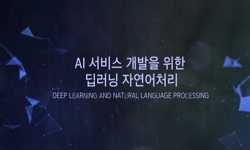This paper describes a clean-up robot that is composed of a mobile base and a manipulator. An object recognition algorithm that is based on an active stereo camera system is also proposed for the clean-up robot. In order for the robot to clear a dinin...
http://chineseinput.net/에서 pinyin(병음)방식으로 중국어를 변환할 수 있습니다.
변환된 중국어를 복사하여 사용하시면 됩니다.
- 中文 을 입력하시려면 zhongwen을 입력하시고 space를누르시면됩니다.
- 北京 을 입력하시려면 beijing을 입력하시고 space를 누르시면 됩니다.
https://www.riss.kr/link?id=A103869750
- 저자
- 발행기관
- 학술지명
- 권호사항
-
발행연도
2017
-
작성언어
English
- 주제어
-
자료형태
학술저널
-
수록면
27-31(5쪽)
- 제공처
-
0
상세조회 -
0
다운로드
부가정보
다국어 초록 (Multilingual Abstract)
This paper describes a clean-up robot that is composed of a mobile base and a manipulator. An object recognition algorithm that is based on an active stereo camera system is also proposed for the clean-up robot. In order for the robot to clear a dining table, the stereo camera system must identify the objects on the dining table and evaluate their positions. For localizing and detecting objects, a convolutional neural network (CNN) that requires a large amount of image data and numerous computations is generally employed. In this study, we use a transfer learning method that is capable of omitting the huge data and the sliding window method that can extract the object area. The SUEF (speeded up robust features) feature points that are extracted by the right camera are compared with those obtained by the left camera, and the area where the number of matched points is the largest is outputted as the object that is to be identified by the left and right cameras. The effectiveness of the object recognition algorithm is verified through clean-up experiments.
목차 (Table of Contents)
- Abstract
- 1. INTRODUCTION
- 2. CLEAN-UP ROBOT
- 3. OBJECT RECOGNITION ALGORITHM
- 4. OBJECT RECOGNITION EXPERIMENTS
- Abstract
- 1. INTRODUCTION
- 2. CLEAN-UP ROBOT
- 3. OBJECT RECOGNITION ALGORITHM
- 4. OBJECT RECOGNITION EXPERIMENTS
- 5. CONCLUSION
- REFERENCES
동일학술지(권/호) 다른 논문
-
SMCSPO based Force Estimation for a Hydraulic Cylinder
- 제어로봇시스템학회
- Wang Jie
- 2017
-
- 제어로봇시스템학회
- Youngkuk Kwon
- 2017
-
Application of Maximized Inter-class Variance for Gender Classification using RGB-Depth Camera
- 제어로봇시스템학회
- Mustafa Eren Yıldırım
- 2017
-
Implementation of Safety Monitoring System at the Waterfront Based on Video Analysis Technique
- 제어로봇시스템학회
- Husnu Baris Baydargil
- 2017




 DBpia
DBpia



